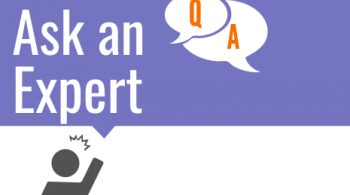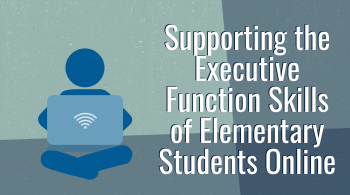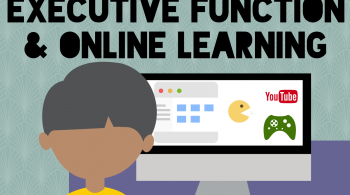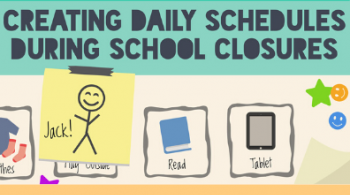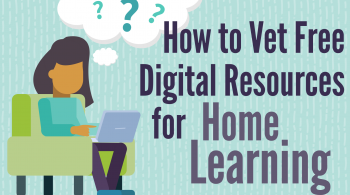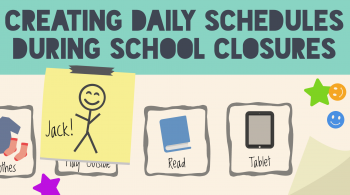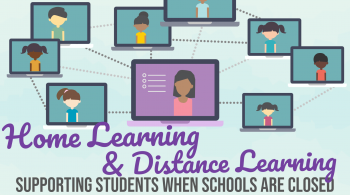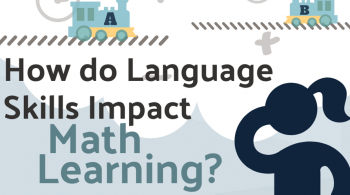By Lisa Carey
October 4, 2016
The Individuals with Disabilities Education Act (IDEA; 2004) includes thirteen categories of disability through which a student can qualify for special education and related services. Among those thirteen codes is emotional disturbance, which is often referred to as emotional/behavioral disability. According to the IDEA, in order to qualify for services within this disability category, a student must experience one of the following characteristics for an extended period of time, AND these characteristics must have a negative impact on the student’s educational performance:
- An inability to learn that cannot be explained by intellectual, sensory, or health factors
- An inability to build or maintain satisfactory interpersonal relationships with peers and teachers
- Inappropriate types of behavior or feelings under normal circumstances
- A general pervasive mood of unhappiness or depression
- A tendency to develop physical symptoms or fears associated with personal or school problems
This category of disability is focused on serving the needs of students with mental health disorders, as well as students with chronic behavioral needs that cannot be explained by their intellectual status, sensory needs, or physical health. Student mental health concerns that negatively impact education can range from students who experience depression and become withdrawn from school and related activities, thus not completing work they would otherwise be able to do, to students struggling with conduct disorder, for whom behaving in a socially acceptable manner can prove difficult. This wide range makes providing teachers with blanket advice for supporting students with emotional/behavioral disabilities in the classroom very difficult. There are, however, some universal best practices that can assist students with mental health concerns.
-
Know the behavior plan.
IDEA requires schools to conduct a functional behavioral assessment (FBA) and create a behavior intervention plan (BIP) for students who are involved in misconduct as a result of their disability. The law also suggests that the creation of a BIP prior to a suspendable offense is a best practice for students struggling with behavior. This means that many students who qualify for special education and related services through the category of emotional disturbance have a behavior plan. You should be provided a copy of this plan with the IEP or IEP snapshot at the start of the school year or when the student enters your class (if mid-year). If you do not understand the behavior plan, ask the student’s case manager or member of the IEP team to review it with you. Memorize the plan. Stick to the plan. If you believe the plan to be unsuccessful, share these thoughts with the student’s case manager so that more data can be collected and changes can be made if necessary. -
Partner with a student’s family.
Talk to the student’s family and determine the best means of communication. In talking with families, I always ask if there is any type of information I can share with them that will help them maintain the wellbeing of the student. Teachers should never suggest medication (we are not doctors); however, teachers can be important sources of information to determine if a dosage is no longer working (kids grow rapidly, this is a common concern). It is possible for parents to bring medical releases, allowing the school to communicate with the student’s medical provider. In addition to medication, sometimes families need assistance to get connected with outside providers and school resources. That brings us to the next point… -
Get to know your school’s mental health providers and collaborate with them.
Your school most likely has a school psychologist and social worker. In addition, your school may have guidance counselors and behavior intervention workers. These professionals can typically offer a wealth of information about student mental health. Get to know them. Become a team. Collaborate. Don’t be afraid to ask them questions! If parents come to you for help finding outside resources, you can refer them to these in-school mental health providers. -
When you see changes in behavior patterns, alert the team.
You’ve now formed solid professional relationships with the student’s parents and the mental health providers in your school. You’ve memorized the student’s behavior plan (if applicable), and things are going well. Then you notice a shift in the student’s behavior. Let everyone know by sharing what you have observed. Shifts in behavior can indicate a lot of things and it is always safest to have the whole team investigating potential threats to a student’s safety. -
Support socialization with peers.
Students who struggle with mental health and behavior often have difficulty with peer relationships (recall from above that the inability to form peer and relationships can be a qualifying factor for an emotional/behavioral disability). It is imperative that you support student interactions. Set clear expectations for student interactions in your room, and provide reinforcement when peer-to-peer communication goes well. Likewise, provide the student with constructive feedback when interactions go poorly.
Above all, remember that the ultimate goal is to keep students in your classroom and to keep them learning as much as possible. This means creating a learning environment and classroom culture that is both welcoming and supportive of all students. As teachers, we can best support students with emotional and behavioral disabilities through collaboration with families and our school teams.





